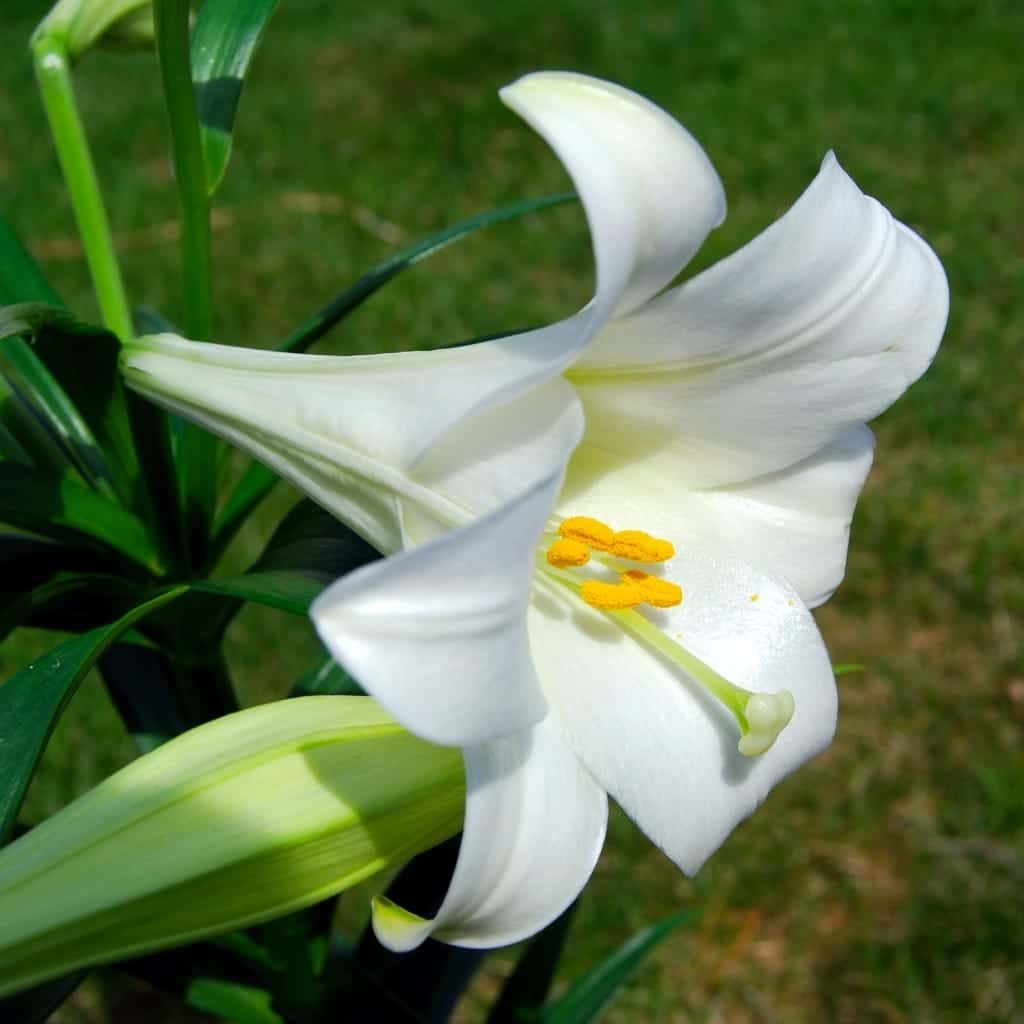Every year at Easter, you can find the beautiful white flowers of the Easter lily, Lilium longiflorum, gracing the altars at churches and for sale in nurseries. Covered in large, showy white flowers, Easter Lilies have come to represent the essence of Easter: purity, virtue, innocence, hope, and life. If you receive an Easter lily this holiday, you’ll be glad to know that it can be planted outdoors in our area and is considered a perennial- It will return and flower year after year. Care for it well, and you will be rewarded with a yearly show of large, beautiful, trumpet-shaped white flowers. How can you make this happen?

Prepare an area for planting your Easter Lilies that is in full sun. Amend the soil in the area well, as Easter Lilies like well-drained soil, and our native soil tends to be heavy, compacted clay. Add at least 4 inches of compost or other fine organic matter and mix it down into the soil to a depth of about 8 eight inches in the planting area. Turn it in to mix it well with the native soil. This will improve the texture of the soil and help improve drainage so that the Easter Lilies bulb and roots will not become wet and rotted.
Plant Easter lily bulbs 3 inches below ground level and put about 1 foot of space between bulbs. Spread the roots in the planting hole and then cover them with soil. Water the bulbs after you have planted them. The original plants will begin to die back to the ground. Wait until after the leaves have withered to cut the stems back to the soil surface. This will allow them to retain the energy created by the green leaves. The plants should start to put on new growth soon after you cut them back.
In the fall, be sure to provide a nice layer of mulch to insulate the bulbs through the cooler months. You can use any mulch that suits you-pine straw, pine bark, or any hardwood mulch should work fine. Your goal is to provide the bulbs with some protection from cold snaps and reduce weed competition. In the spring, your work will be rewarded with new green growth. However, your Easter Lilies won’t bloom at Easter in your yard. The potted plants were grown in nurseries under controlled conditions and forced to bloom at Easter. In our landscapes, Easter Lilies bloom in the summer months. Their flowering is dependent upon warm temperatures and having enough light, but when they flower, they will be just as beautiful and fragrant in summer as they were at Easter.
The author of this article, Mary Carol Sheffield, is the Paulding County Extension Coordinator and Agent for Agriculture and Natural Resources. For more information on gardening in Paulding, contact a Master Gardener or the County Extension Agent at the Paulding County Cooperative Extension Office at 770-443-7616 or check us out online at www.ugaextension.org/paulding.